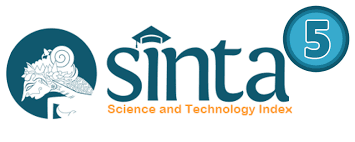Tren, Status, Dan Niat Beli: Peran Motivasi Dan Inspirasi Terhadap Niat Beli Produk Masstige
DOI:
https://doi.org/10.37476/nmar.v6i2.5224Keywords:
Veblen Motivation, Bandwagon Motivation, Customer Inspiration, Purchase Intention, Masstige ProductAbstract
Tujuan dari penelitian ini adalah untuk melihat bagaimana motivasi Veblen dan Bandwagon mempengaruhi inspirasi konsumen terhadap masstige dan bagaimana hal tersebut mempengaruhi niat mereka untuk membeli produk Samsung yang masstige. Dua ratus orang yang mengenal seri Fold dan Galaxy Ultra dari Samsung disurvei secara online menggunakan kuesioner Google Formulir yang dipilih dengan metode purposive sampling. Korelasi antar variabel penelitian dievaluasi dengan analisis data menggunakan Structural Equation Modeling (SEM) dengan SmartPLS 4.0. Veblen Motivation, Bandwagon Motivation, dan Inspirasi Konsumen terhadap Masstige berhubungan secara positif dan signifikan, sesuai dengan data. Selain itu, terdapat hubungan yang positif dan signifikan secara statistik antara inspirasi konsumen terhadap Masstige dan niat untuk membeli Masstige. Penelitian ini menambah apa yang telah diketahui tentang perilaku konsumen, khususnya yang berkaitan dengan faktor-faktor yang memotivasi orang untuk membeli barang masstige (prestise massal). Hasil penelitian ini juga memiliki implikasi manajemen yang penting, karena menyiratkan bahwa kampanye iklan harus menyoroti status dan nilai simbolis barang. Selain itu, produk masstige dapat memperoleh manfaat dari daya tarik viral dan peningkatan minat pasar massal yang muncul karena adanya tokoh terkenal atau kelompok teknologi sebagai pendukung.
References
Alic, A., Cinjarevic, M., & Maktouf-Kahriman. (2022). Exploring the antecedents of masstige purchase behaviour among different generations. Management & Marketing. 17(3), 255–271.
Al‐Issa, N., Kwiatek, & Dens, N. (2024). Masstige buyers: Profile, perceived luxury values and purchase intentions. International Journal of Consumer Studies, 48(1).
Baber, R., Upadhyay, Y., Kaurav, R., & Baber, P. (2020). Application of’masstige’theory and approaches for the marketing of smartphone brands in India. International Journal of Business and Emerging Markets, 12(3), 296–312.
Boisvert, J., Christodoulides, G., & Khan, M. (2023). Toward a better understanding of key determinants and consequences of masstige consumption. Journal of Business Research, 16(1), 113–871.
Böttger, T., Rudolph, T., Evanschitzky, H., & Pfrang, T. (2017). Customer Inspiration: Conceptualization, Scale Development, and Validation. Journal of Marketing , 81(6), 116–131.
Burhanudin. (2024). Masstige marketing: Addressing short‐term and long‐term happiness. International Journal of Consumer Studies, 48(1).
Das, M., Jebarajakirthy, C., Sivapalan, & A. (2022). How consumption values and perceived brand authenticity inspire fashion masstige purchase? An investigation. Journal of Retailing and Consumer Services, 1–14.
GlobalStats. (2025). Top 3 Market. Statcounter.
Granot, Russell, L., Brashear, & Alejandro. (2013). Populence: Exploring luxury for the masses. Journal of Marketing Theory and Practice, 21(1), 31–44.
Gupta, S., Raj, S., Singh, D., & Singh, A. (2023). Normative influence and masstige purchase intention: Facilitators, inhibitors, and the moderating effect of celebrity endorsement. International Journal of Consumer Studies, 1189–1209.
Hair, J., Risher, J., & Ringle, C. (2019). When to use and how to report the results of PLS-SEM. European Business Review , 31(1), 2–24.
Iqbal, M., & Khan. (2023). Impact of Self-Gift Behavior on Masstige Consumption: Moderating Role of Self-Esteem and Ideal-Social-Self. Journal Research for Societal Issues, 5(2), 1–22.
Kang, I., & Ma, I. (2020). A study on bandwagon consumption behavior based on fear of missing out and product characteristics. Sustainability, 12(6), 24–41.
Kastanakis, M., & Balabanis. (2012). Between the mass and the class: Antecedents of the “bandwagon” luxury consumption behavior. Journal of Business Research , 65(10), 1399–1407.
Khan, M., Ishaq, M., & Raza, A. (2024). Impact of self‐esteem and self‐gifting on masstige purchase intentions. International Journal of Consumer Studies, 48(2).
Kumar, A., Paul, J., & Starčević, S. (2021). Do brands make consumers happy?-A masstige theory perspective. Journal of Retailing and Consumer Services, 5(8), 102–318.
Mainolfi. (2020). Exploring materialistic bandwagon behaviour in online fashion consumption: A survey of Chinese luxury consumers. Journal of Business Research, 120, 286–293.
Mansoor, Paul, J., Saeed, A., & Cheah, J. (2024). When mass meets prestige: The impact of symbolic motivations, inspirations, and purchase intentions for Masstige products. Journal of Business Research, 1–15.
Maroof. (2023). Factors Influencing Masstige Purchase Intentions in Pakistani Millennials: The Role of Inspiration, Fomo, and Need for Uniqueness. Global Management Sciences Review, 9(3), 105–120.
Meydiawati, M., Pebrianti, W., & Ramadania, R. (2024). The Influence Of Need For Uniqueness, Bandwagon Effect And Reference Group On Purchase Intention Through Value-Expressive Function Of Attitude As An Intervening Variable (Empirical Study On Hijab Buttonscarves). . International Journal of Economics, Business and Accounting Research (IJEBAR), 8(1).
Paul, J. (2015). Masstige Marketng Redefined and Mapped: Introducing a Pyramid Model and MMS Measure. Journal of Marketing Intelligence & Planning , 33(5), 691–706.
Purohit, & Radia. (2022). Conceptualizing masstige buying behavior: A mixed-method approach. . . Journal of Business Research., 886–898.
Roscoe, J. (1975). Fundamental Research Statistics for the Behavioural Sciences (2nd ed., Vol. 1). Holt Rinehart & Winston.
Sekaran, U., & Bougie, R. (2018). Metode Penelitian Untuk Bisnis. Salemba Empat.
Shukla, & Rosendo-Rios. (2021). Intra and inter-country comparative effects of symbolic motivations on luxury purchase intentions in emerging markets. International Business Review, 30(1), 101–768.
Soni. (2023). Luxury or Masstige: Role of Global and Local Identities, Luxuriousness Variances, Price Luxuriousness Inferences, and Consumer Flexibility. Journal of International Consumer Marketing, 35(3), 333–350.
Standard Insights. (2024). Consumer Report Indonesia. Standard Insights.
Sugiyono. (2020). Metode penelitian kuantitatif, kualitatif dan R&D. Alfabeta.
Veblen. (1899). The Theory Of The Leisure Class. Viking-Penguin.
Downloads
Published
How to Cite
Issue
Section
License
Copyright (c) 2025 Nobel Management Review

This work is licensed under a Creative Commons Attribution-NonCommercial 4.0 International License.







